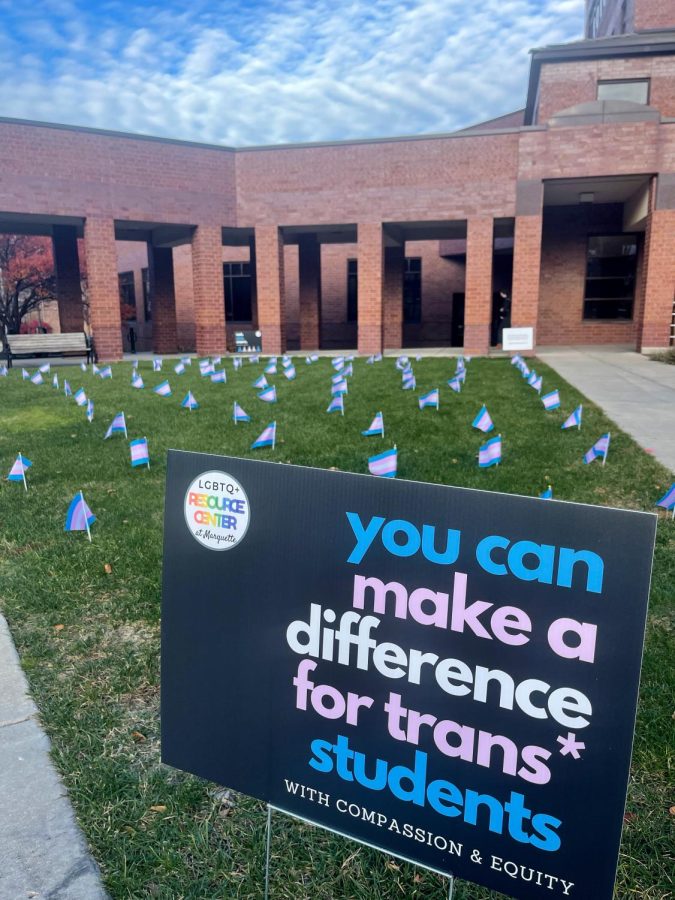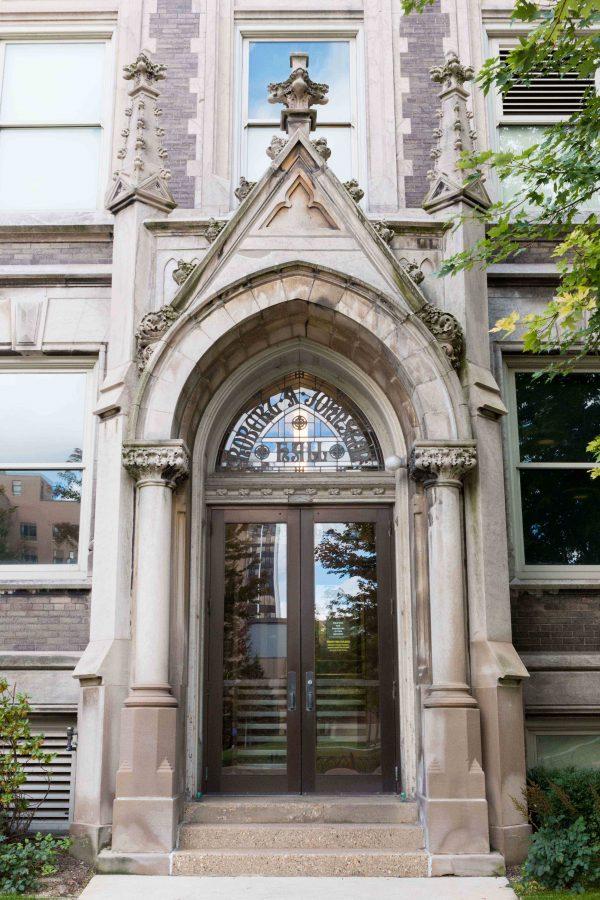The path to change Marquette University’s seal has been an uphill battle. There have long been discussions surrounding whether or not the seal would be changed, actions taken by students and debates across community members. Over two years ago, Marquette student Amanda Harris started a petition to change the seal, and this past February, the university approved the updated university seal. But, the new seal has not been replaced everywhere on campus.
The updated seal is currently displayed in some campus spaces such as the Alumni Memorial Union ballroom. But, in other prominent locations on campus such as the Raynor Memorial Library nor at the top of the stairs in the AMU, the seal has not been changed.
As the university continues efforts to revitalize the campus with the construction of the new business building and plans for a new wellness and recreation center, it is important that Marquette does not leave the updated seal in the dust. The significance of this change is characterized by a commitment to be more considerate and inclusive — prioritizing accurate depictions of history.
“University seals are important symbols meant to celebrate an institution’s founding, heritage and purpose, and these often complex histories deserve thoughtful reverential illustrations of our past,” President Lovell said in a statement.
Marquette’s seal was changed in light of a mission to better represent the community’s ties to Indigenous peoples and their land. Specifically, to “more accurately reflect” the involvement of Indigenous tribes in Jacques Marquette’s journey to find the mouth of the Mississippi river.
There were significant issues with the original seal that needed to be changed in order for the Indigenous community to be properly recognized and to uphold Marquette’s commitment to its land and water acknowledgement. For instance, the original seal depicted Jacques Marquette leading an Indigenous man because the image was cropped, but the full painting that the seal was based off of depicts just the opposite.
The updated seal showcases a landscape to honor the land and waterways the university rests upon.
Although the university has asserted its commitment to this seal change and its importance, the university has yet to replace all on-campus seals with the updated version. Though, the university has begun the process of replacing the seals and these will eventually be seen in locations such as the Wisconsin Avenue archway outside of the AMU. Still, not every seal on campus will be replaced. Those not replaced will feature an educational plaque beside them to explain historical context.
On Marquette’s website, the only statement regarding physical campus changes is the following: “The university is developing a phased process for updating the seal on items and in locations across campus over time.” This appears to be a part of the statement released by the university Feb. 28. Since then, the university has failed to provide students with any concrete updates on how, when and where changes will be made to the campus at large.
The university should strive to release an amended statement soon to acknowledge that they are still working towards changing the seals displayed around campus and giving students an idea of when they can expect to see these changes. With a lack of communication, students are left in the dark regarding when, where and how the university will continue its efforts to prioritize inclusivity and transparency.
Another way that the university could incorporate the seal is to place it on spirit wear and sports gear. To display the updated seal on clothing items and other accessories that students could wear or use would be a simple but expressive way to show dedication to the principle of it. And, many students would likely appreciate the option to represent their university and its history in an accurate light.
In order for the university’s claims of an effort to create a more inclusive campus climate to be genuine, they must implement physical changes. They must meet assertion with action in order to be taken seriously. If the university continues to rest on its laurels and neglect Marquette’s campus, it will speak volumes to its student body – especially its Indigenous students.
To create a truly inclusive university that actively values all of its students, Marquette must continue to make a conscious effort to follow through on its promises. When it comes to discussions of diversity and inclusion, Indigenous people get left behind, left out of the conversation and left in despair. Marquette must change that and act now.
Editorial topics by the Marquette Wire are decided at weekly meetings between members of the executive board. The editorial is crafted with leadership by the executive opinions editor. The executive board consists of the executive director of the Wire, managing editor of the Marquette Tribune, managing editor of the Marquette Journal, general manager of MUTV, general manager of MUR and ten additional top editors across the organization.








